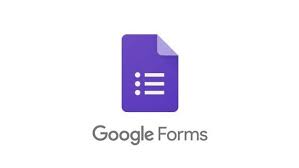Does The EFL-Multimodal Textbook and Culture In The Independent Curriculum Represent Character Education?: A Critical Discourse Analysis
DOI:
https://doi.org/10.31597/sl.v10i1.1220Keywords:
Character Education, Critical Discourse Analysis, EFL-Multimodal Textbook, Independent CurriculumAbstract
While there has been extensive research on Critical Discourse Analysis (CDA) in multimodal textbooks, most studies primarily focus on analyzing culture and gender. However, the investigation of Character Education using CDA still needs to be more extensive. To fill this void, this study aims to examine the representation of Character Education in secondary-level English textbooks in Indonesia, following one of the goals of the latest curriculum to make each individual have character and behave following the values of Profil Pelajar Pancasila (The Pancasila Students’ Profiles). To address this issue, this study conducted a critical discourse analysis by adopting Kress and Van Leuween's (2006) Visual Grammar Theory to analyze the visual image and Halliday’s (1975) and Matthiessen’s (2004) Systemic Functional Analysis (SFL) to elucidate the textual representation of the character education in the selected EFL-multimodal textbook. This research focuses on Thomas Lickona's (1996) six fundamental components of good character: caring, honesty, fairness, accountability, and respect for self and others. This study can assist educators in incorporating character education into their teaching techniques and provide them with the essential skills and information to foster the development of positive character traits in their students.
References
Althof, W., & Berkowitz, M. W. (2006). Moral education and character education: Their relationship and roles in citizenship education. In Journal of Moral Education (Vol. 35, Issue 4, pp. 495–518). https://doi.org/10.1080/03057240601012204
Amalsaleh, E., Javid, F., & Rahimi, A. (2010). The power of language and ELT textbooks. Procedia - Social and Behavioral Sciences, 9, 2052–2056. https://doi.org/10.1016/j.sbspro.2010.12.445
Basya, D., Afandi, A. F., & Hosim, M. (2023). Does the EFL textbook for islamic senior high school reflect islamic values? A critical discourse analysis. English Teaching Journal: A Journal of English Literature, Linguistics, and Education, 11(2), 102–111. https://doi.org/10.25273/etj.v11i2.18209
Basya, D., Sandita, B. R., Saputri, A., Muhajir, M. I., Arizah, N. R., & Andriyanto, R. (2023). How Indonesian Junior High School EFL Textbooks Instill Moral Values? A Critical Discourse Analysis. 03(01), 258–269.
Cho, Y., & Park, Y. (2016). “Textbook as a contradictory melting-pot”: an analysis of multicultural content in Korean textbooks. Asia Pacific Journal of Education, 36(1), 111–130. https://doi.org/10.1080/02188791.2014.924388
Fairclough, N. (2013). Critical Discourse Analysis: The Critical Study of Language (2nd ed). Routledge
Fairclough, N. (2013). Critical discourse analysis and critical policy studies. Critical Policy Studies, 7(2), 177–197. https://doi.org/10.1080/19460171.2013.798239
Feng, W. D. (2019). Infusing moral education into English language teaching: an ontogenetic analysis of social values in EFL textbooks in Hong Kong. Discourse, 40(4), 458–473. https://doi.org/10.1080/01596306.2017.1356806
Gebregeorgis, M. Y. (2016). Gender Construction Through Textbooks: The Case of an Ethiopian Primary School English Textbook. Africa Education Review, 13(3–4), 119–140. https://doi.org/10.1080/18146627.2016.1224579
Halliday, M.A.K., Matthiessen, C. M. I. M. (2014). An introduction to functional grammar. Oxon & New York: Routledge.
Handayani, P., Kholis, N., Sidoarjo, U. M., Sunan, U., & Surabaya, A. (n.d.). MORAL EDUCATION: COMPARATIVE ANALISYS OF CHARACTER EDUCATION FRAMEWORK IN INDONESIA AND CHINA. https://journal.antispublisher.com/index.php/UJMI
Imelwaty, S., Gunawan, F., Kuraedah, S., Mardiana, W., Wardhana, D. E. C., & Boulahnane, S. (2024). Moral values in Indonesian primary school thematic textbooks: the marrying of language appraisal and moral foundation theories. Education 3-13, 52(5), 690–702. https://doi.org/10.1080/03004279.2022.2120771
JeongAe You, HyeSeung Lee & Cheryl J. Craig (2019): Remaking textbook policy; analysis of national curriculu, alignment in Korean school textbooks, Asia Pacific Journal of Education, DOI: 10.1080/02188791.2019.1572591
Kepala Badan Standar, K. dan A. P. (2022). Dimensi, Elemen, dan Subelemen Profil Pelajar Pancasila. Kementerian Pendidikan, Kebudayaan, Riset, Dan Teknologi, 1–35.
Lickona, T. (1996). Eleven principles of effective character education. Journal of Moral Education, 25(1), 93–100. https://doi.org/10.1080/0305724960250110
Lickona, T. (1999). Character Education: Seven Crucial Issues. Action in Teacher Education, 20(4), 77–84. https://doi.org/10.1080/01626620.1999.10462937
Marashi, H. (2018). Using Critical Discourse Analysis Based Instruction to Improve EFL Learners’ Writing Complexity, Accuracy and Fluency. https://www.researchgate.net/publication/324310256
Puspitasari, D., Widodo, H. P., Widyaningrum, L., Allamnakhrah, A., & Lestariyana, R. P. D. (2021). How do primary school English textbooks teach moral values? A critical discourse analysis. Studies in Educational Evaluation, 70(July). https://doi.org/10.1016/j.stueduc.2021.101044
Setyono, B., & Widodo, H. P. (2019). The representation of multicultural values in the Indonesian Ministry of Education and Culture-Endorsed EFL textbook: a critical discourse analysis. Intercultural Education, 30(4), 383–397. https://doi.org/10.1080/14675986.2019.1548102
Silay, N. (2014). A study of moral education and its relationship with character education. Mediterranean Journal of Social Sciences, 5(2), 353–358. https://doi.org/10.5901/mjss.2014.v5n2p353
Subhkan, E., & Wahyudin, D. (2024). Kajian Akademik Kurikulum Merdeka. 1–143.
Tan, B. P., Mahadir Naidu, N. B., & Jamil@Osman, Z. (2018a). Moral values and good citizens in a multi-ethnic society: A content analysis of moral education textbooks in Malaysia. Journal of Social Studies Research, 42(2), 119–134. https://doi.org/10.1016/j.jssr.2017.05.004
Xiong, T., & Qian, Y. (2012). Ideologies of English in a Chinese high school EFL textbook: A critical discourse analysis. Asia Pacific Journal of Education, 32(1), 75–92. https://doi.org/10.1080/02188791.2012.655239
Downloads
Published
How to Cite
Issue
Section
License
1. Copyright of this journal is possession of Editorial Board and Journal Manager, by the knowledge of author, whilst the moral right of the publication belongs to the author.
2. Legal formal aspect of journal publication accessibility refers to Creative Commons Atribution-ShareAlike (CC BY-SA), implies that this license lets others remix, adapt, and build upon your work even for commercial purposes, as long as they credit you and license their new creations under the identical terms. This license is often compared to “copyleft” free and open source software licenses.
3. Every publications (printed/electronic) are open access for educational purposes, research, and library. Other that the aims mentioned above, editorial board is not responsible for copyright violation















